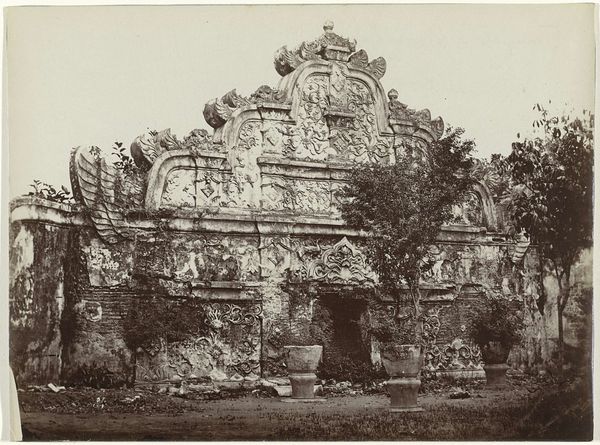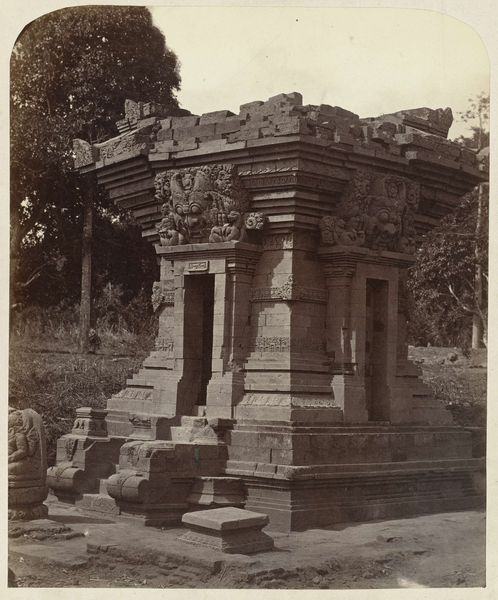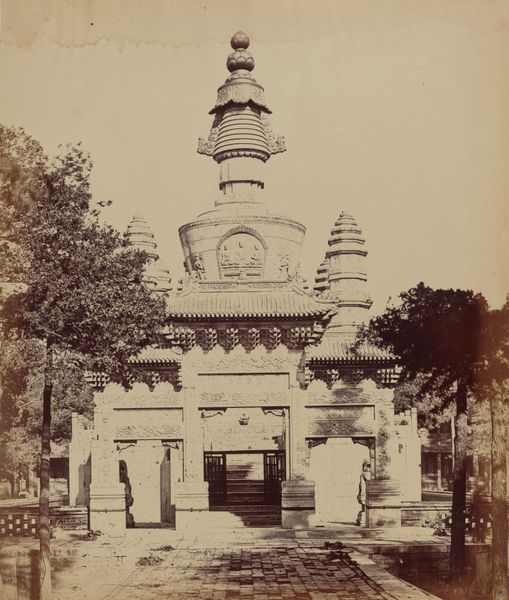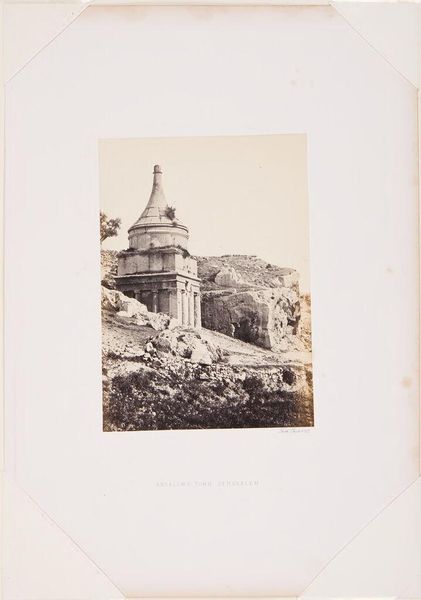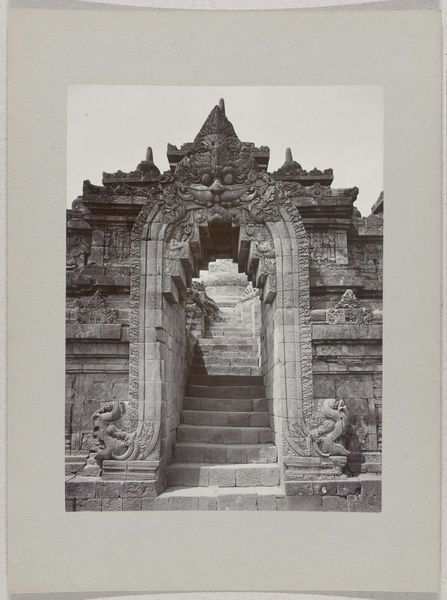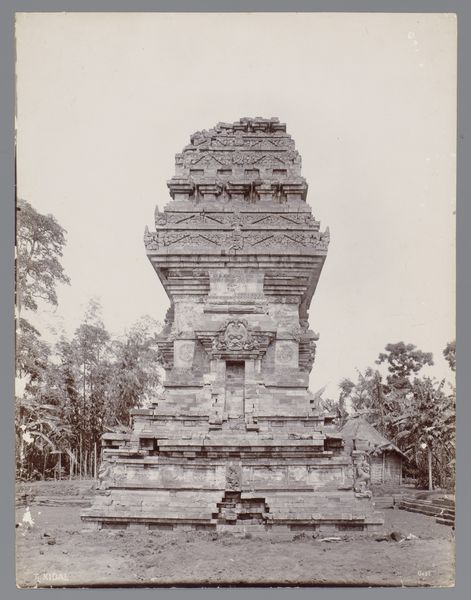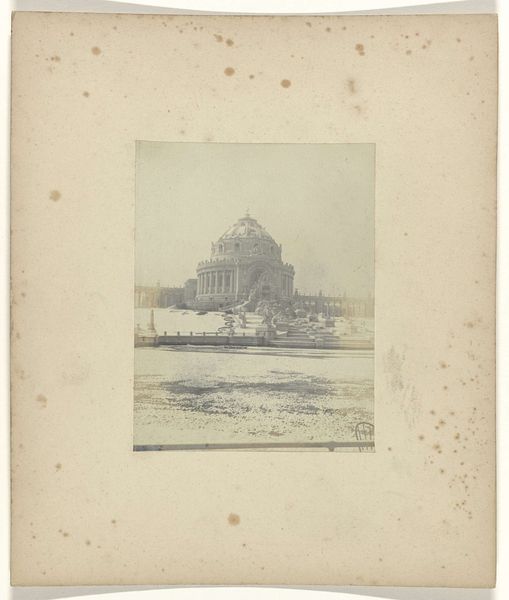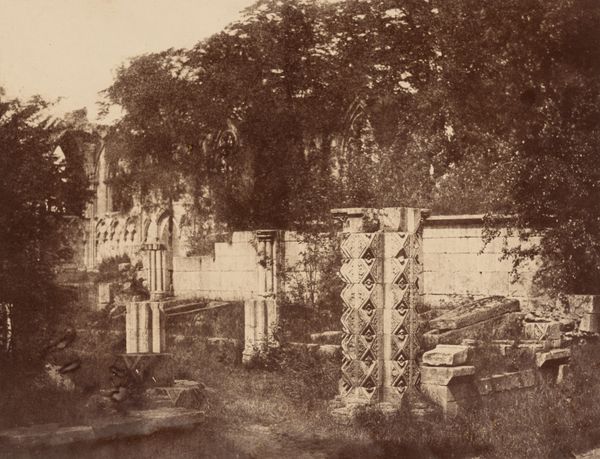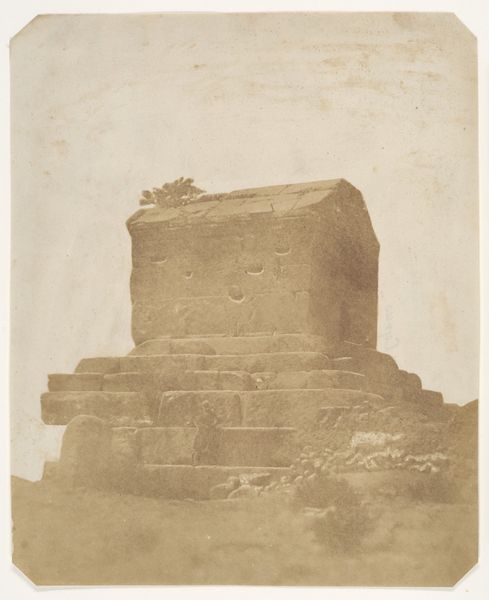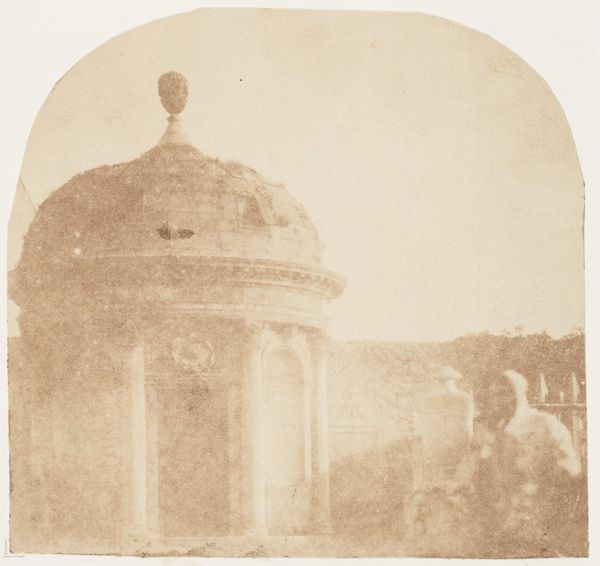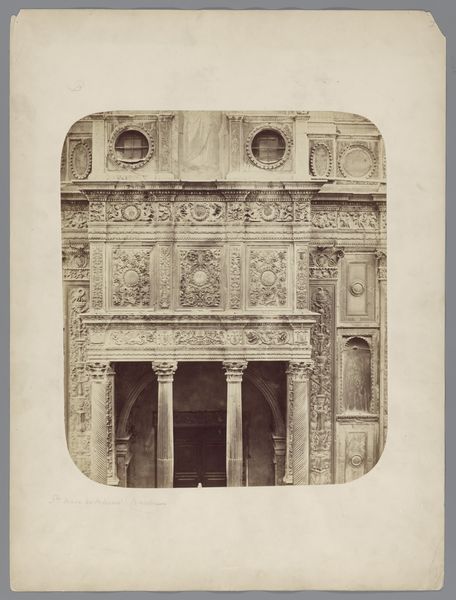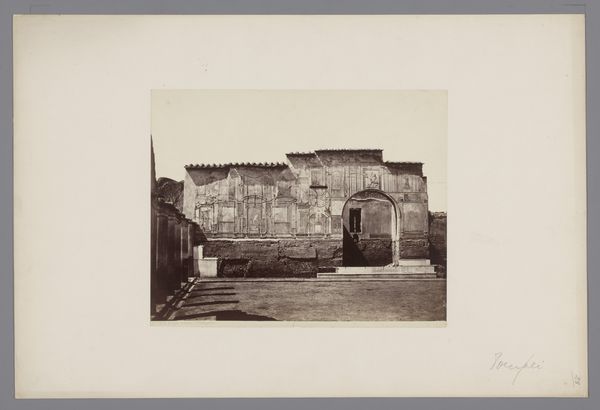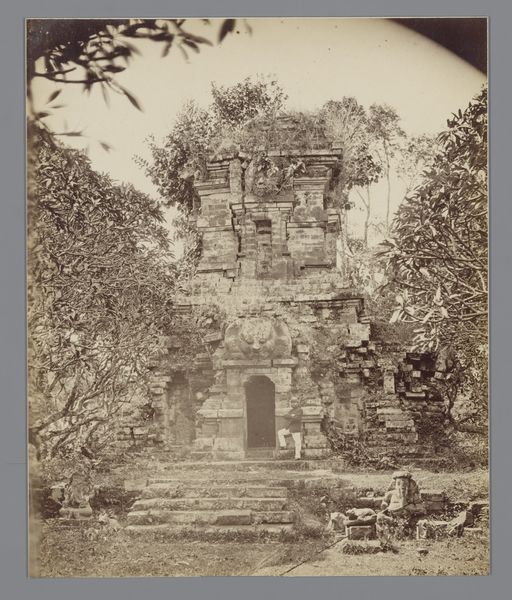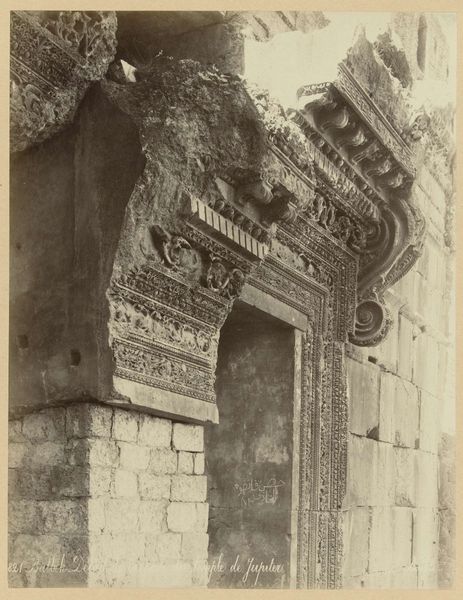
tempera, print, photography, site-specific, gelatin-silver-print
#
toned paper
#
tempera
# print
#
asian-art
#
landscape
#
photography
#
site-specific
#
gelatin-silver-print
Dimensions: height 241 mm, width 195 mm, height 521 mm, width 406 mm
Copyright: Rijks Museum: Open Domain
Editor: This is "Buddhist temple Candi Mendut on Central Java," a gelatin silver print by Woodbury & Page, created between 1860 and 1880. It has such a timeless feel. What stories do you think this photograph tells us about its context? Curator: It’s interesting to consider this image through the lens of colonial gaze. Woodbury & Page, a European firm, documented this significant Buddhist temple. What does it mean to capture and circulate images of culturally important sites within a colonial framework? Editor: I never thought of it that way! It seems so objective at first glance. Curator: Exactly! And that's the insidious part. Photography, especially in its early days, was often presented as objective truth. But consider: who held the camera? Whose perspective shaped the composition, the framing, and ultimately, the narrative? How did the circulation of these images reinforce or challenge existing power structures? Editor: So, this image isn't just about documenting a temple; it's about power dynamics and representation. How does this relate to our understanding of Asian art today? Curator: It pushes us to be critical of the archives. It also means decentering a Western viewpoint and thinking more intersectionally about gender and race and questioning who had the power in Southeast Asia to tell stories, and whose voices were being suppressed. Editor: That's a powerful reminder to always question the perspectives behind historical documentation. Curator: Precisely. And it highlights the need to amplify marginalized voices and create a more equitable understanding of art history. What do you make of the trees almost obscuring our direct view? Editor: I’m now seeing this photograph, and the very act of capturing it, with fresh eyes.
Comments
No comments
Be the first to comment and join the conversation on the ultimate creative platform.
